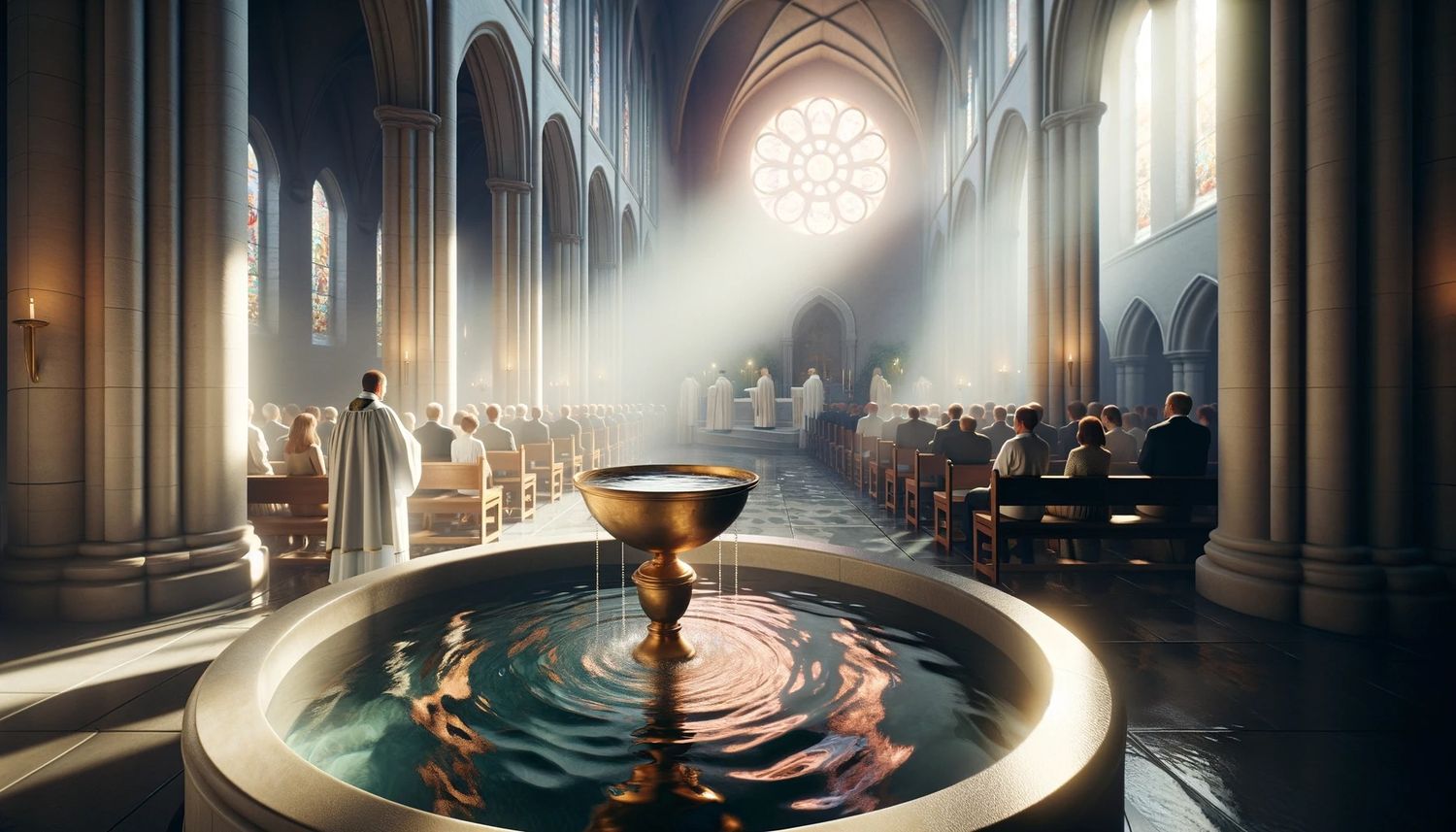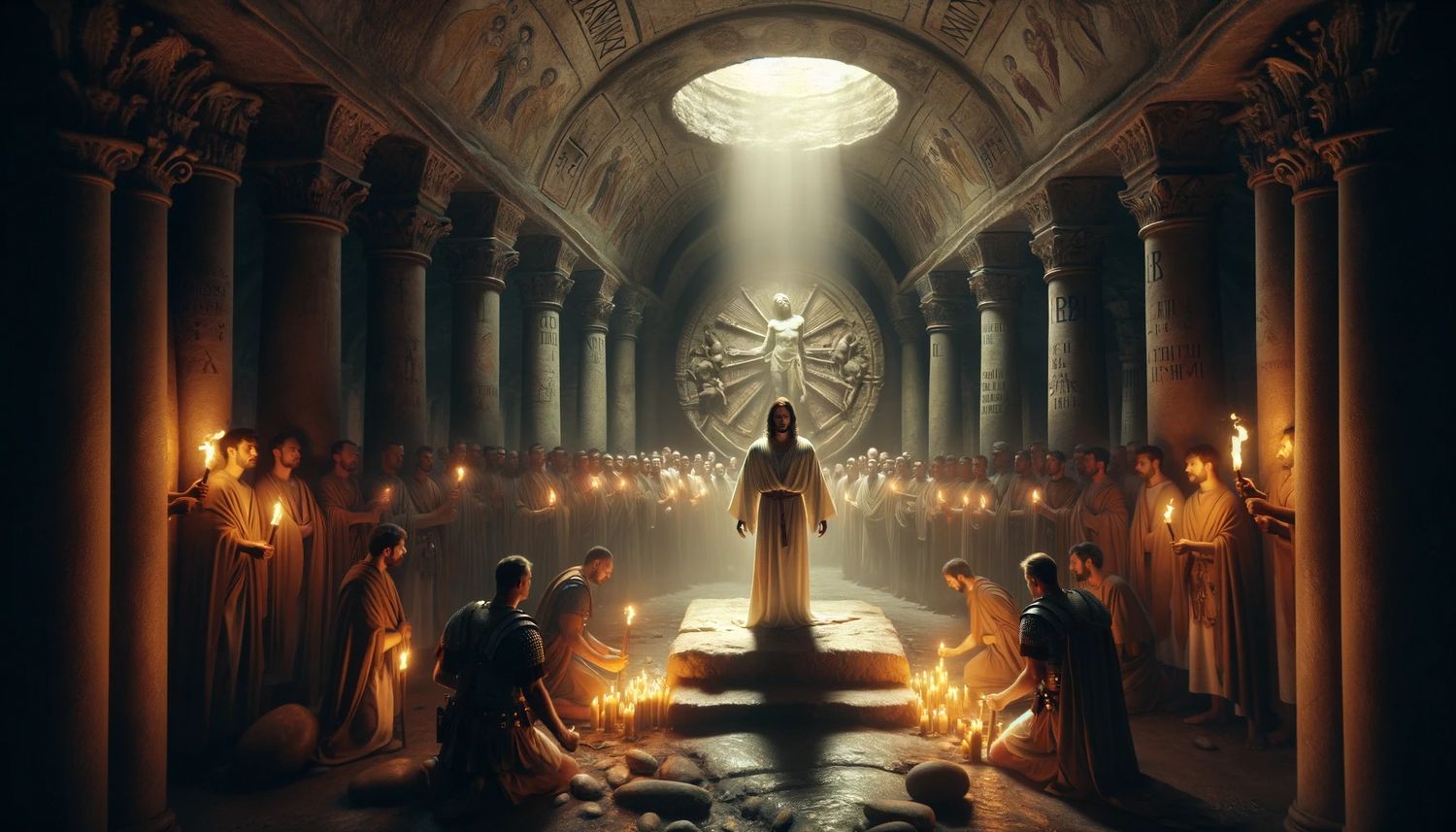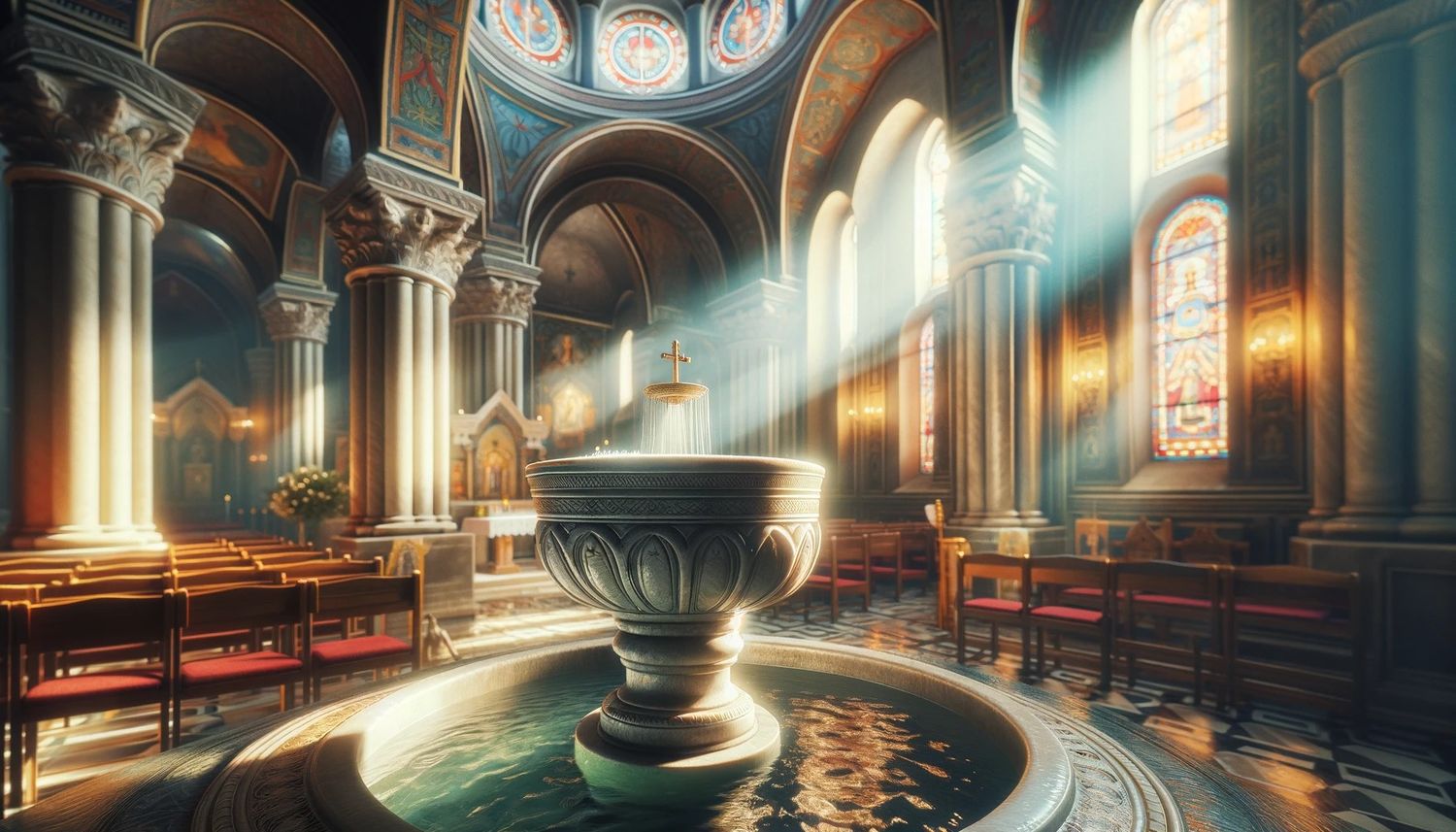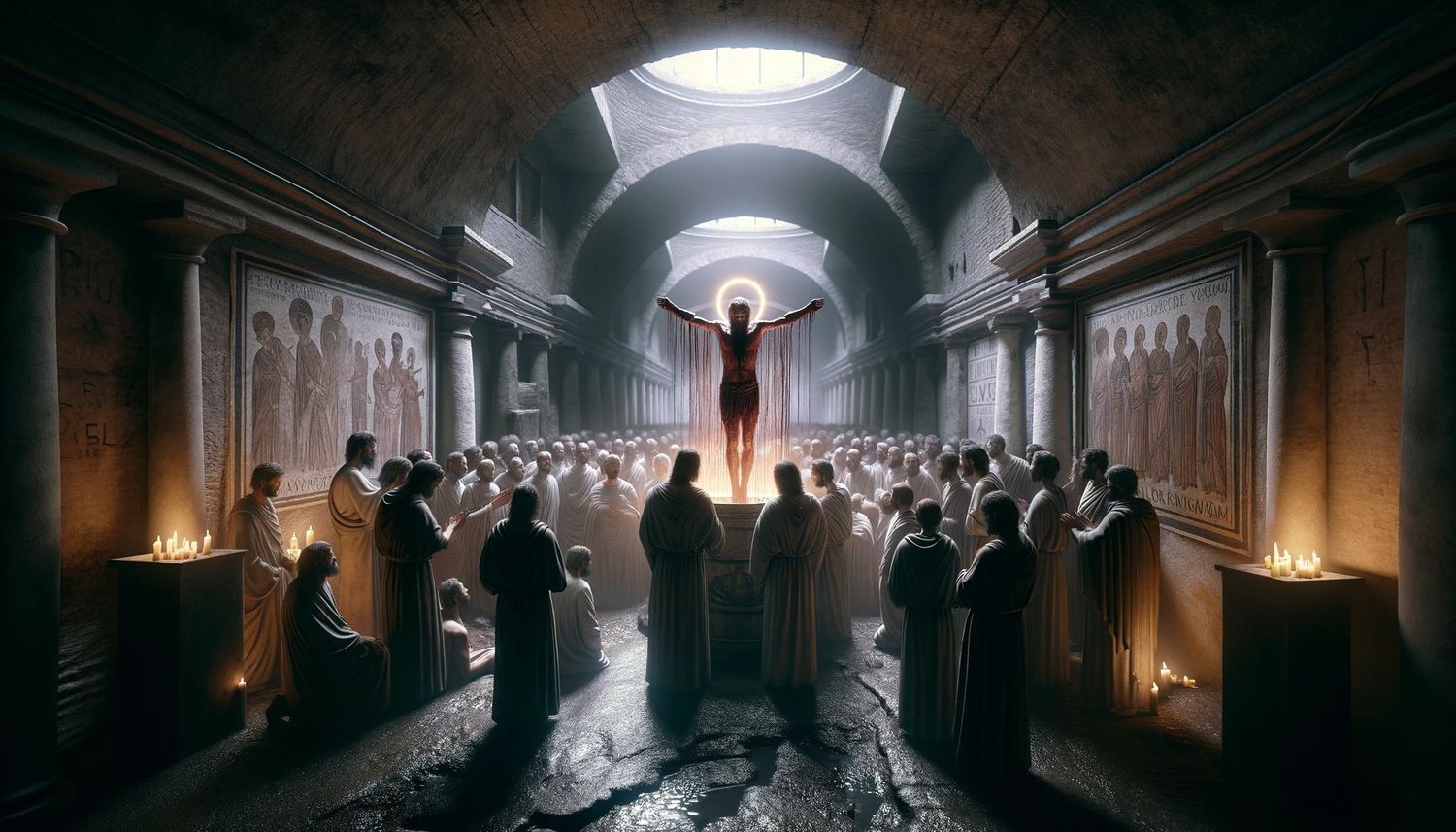Home>Theology and Spirituality>What Is The Color Of Baptism


Theology and Spirituality
What Is The Color Of Baptism
Published: March 2, 2024
Ericka Andersen, an editor at Christian.net, expertly merges digital strategy with content creation, focusing on faith and societal issues. Her communication skills enhance the platform's engaging narratives, fostering meaningful dialogue on belief's impact on society.
Explore the significance of the color of baptism in theology and spirituality. Learn about the symbolism and traditions associated with this sacred rite.
(Many of the links in this article redirect to a specific reviewed product. Your purchase of these products through affiliate links helps to generate commission for Christian.net, at no extra cost. Learn more)
Table of Contents
The Symbolism of White in Baptism
-
Purity and Innocence: The color white has long been associated with purity and innocence. In the context of baptism, it symbolizes the cleansing of the soul and the removal of sin. When an individual is baptized, they are believed to be cleansed of their sins and to emerge from the water as pure and innocent as a newborn.
-
Renewal and Rebirth: White also represents renewal and rebirth. In the Christian faith, baptism is seen as a spiritual rebirth, a new beginning in the life of the believer. The white garment worn during baptism symbolizes this fresh start, free from the burden of past transgressions.
-
Victory and Triumph: White is often associated with victory and triumph. In the context of baptism, it symbolizes the triumph of good over evil, light over darkness. It represents the believer's victory over sin and their commitment to leading a life of righteousness.
-
Holiness and Purity of Heart: White is a color often linked to holiness and the purity of heart. In the act of baptism, it signifies the believer's desire to lead a life of holiness and to maintain a pure heart before God and others.
-
Unity and Oneness: White is a unifying color, often associated with harmony and oneness. In the context of baptism, it symbolizes the unity of the believer with the body of Christ, the church. It represents the individual's acceptance into the community of believers and their commitment to living in harmony with others.
-
Hope and Light: White is also a symbol of hope and light. In the act of baptism, it signifies the believer's hope for a bright and promising future, guided by the light of faith and the teachings of Christ.
The symbolism of white in baptism is rich and profound, carrying deep spiritual significance for believers across different Christian denominations and traditions.
Read more: What Is Baptism
The Historical Significance of Baptismal Colors
-
Early Christian Era: In the early Christian era, the color white was predominantly used in baptismal ceremonies. This tradition can be traced back to the early church fathers and the writings of theologians such as Tertullian and Origen. White garments were worn by the candidates for baptism, symbolizing their purity and newness of life in Christ.
-
Medieval Period: During the medieval period, the symbolism of baptismal colors became more elaborate. White continued to be the primary color associated with baptism, representing the purity and innocence of the baptized individuals. Additionally, the use of white garments signified the spiritual transformation and rebirth experienced through the sacrament of baptism.
-
Renaissance and Baroque Eras: The Renaissance and Baroque eras saw an expansion in the use of baptismal colors. While white remained the dominant color, other hues such as gold and silver were introduced to emphasize the divine and sacred nature of baptism. These colors were often incorporated into the ceremonial decorations and accessories used during baptismal rites.
-
Reformation Period: The Reformation brought about variations in the use of baptismal colors across different Christian denominations. While some traditions continued to uphold the significance of white as the primary color of baptism, others began to incorporate additional colors such as blue, symbolizing the heavenly realm, and red, signifying the blood of Christ and the martyrdom of saints.
-
Modern Era: In the modern era, the historical significance of baptismal colors continues to be preserved in various Christian communities. White remains a prevalent color in baptismal ceremonies, representing the timeless themes of purity, renewal, and spiritual rebirth. However, contemporary practices also reflect a diversity of cultural influences, with some communities incorporating regional or ethnic colors into their baptismal rituals.
The historical significance of baptismal colors underscores the enduring symbolism and spiritual depth associated with the sacrament of baptism throughout the centuries.
The Cultural Variations in Baptismal Colors
-
Eastern Orthodox Tradition: In the Eastern Orthodox tradition, the predominant color for baptism is gold. Gold symbolizes the heavenly kingdom and the divine nature of the sacrament. The use of gold in baptismal garments and accessories reflects the belief in the sanctity and transcendence of the baptismal experience.
-
Coptic Christian Tradition: Coptic Christians often incorporate red into their baptismal ceremonies. Red symbolizes the blood of Christ and the martyrdom of saints. It represents the sacrifice of Jesus and the spiritual strength required to live a faithful life.
-
Ethiopian Orthodox Tradition: In the Ethiopian Orthodox tradition, the color green holds significance in baptism. Green symbolizes growth, fertility, and the flourishing of spiritual life. It represents the new life that believers receive through baptism and the continuous nurturing of their faith.
-
Latin American and Hispanic Traditions: In Latin American and Hispanic traditions, the color blue is often used in baptismal rituals. Blue represents the heavenly realm and the protection of the Virgin Mary. It is associated with the nurturing and compassionate aspects of the divine.
-
African American Christian Tradition: In the African American Christian tradition, vibrant and bold colors are often incorporated into baptismal ceremonies. These colors reflect the vibrancy of faith, the richness of cultural heritage, and the celebration of spiritual identity within the community.
-
Asian Christian Traditions: In various Asian Christian traditions, cultural colors such as red, yellow, and orange are integrated into baptismal practices. These colors hold cultural and spiritual significance, representing themes of prosperity, joy, and spiritual enlightenment within the context of baptism.
-
European and Western Traditions: In European and Western traditions, white remains a predominant color in baptismal ceremonies, symbolizing purity and newness of life. However, contemporary practices also embrace cultural diversity, allowing for the incorporation of regional colors and symbolic motifs that resonate with the cultural heritage of the baptized individuals.
The cultural variations in baptismal colors reflect the diverse expressions of faith and the rich tapestry of traditions within the global Christian community. These variations highlight the adaptability of the sacrament of baptism to different cultural contexts while maintaining its profound spiritual significance.
The Spiritual Meaning of Baptismal Colors
-
White: As mentioned earlier, white symbolizes purity, innocence, renewal, victory, holiness, unity, and hope. In the spiritual context of baptism, white represents the cleansing of the soul, the emergence of a new life in Christ, and the believer's commitment to righteousness and spiritual growth.
-
Gold: In many Christian traditions, gold is associated with the divine and heavenly realm. When used in baptismal ceremonies, gold signifies the sacred nature of the sacrament and the believer's connection to the eternal kingdom of God. It represents the spiritual wealth and transcendence attained through baptism.
-
Red: The color red symbolizes the blood of Christ and the sacrifice made for the redemption of humanity. In baptism, red signifies the transformative power of Christ's blood, the courage to live a faithful life, and the willingness to endure hardships for the sake of one's faith.
-
Green: Green is often linked to growth, fertility, and the flourishing of life. In the spiritual context of baptism, green represents the continuous nurturing of faith, the abundance of spiritual blessings, and the ever-growing relationship with God. It symbolizes the new life and vitality received through the sacrament of baptism.
-
Blue: Blue is associated with the heavenly realm and the protective embrace of the Virgin Mary in certain cultural traditions. In baptism, blue symbolizes divine protection, maternal care, and the nurturing presence of the divine. It represents the believer's trust in the guidance and intercession of the Blessed Mother.
-
Vibrant and Bold Colors: In some cultural and ethnic traditions, vibrant and bold colors are used in baptismal ceremonies to celebrate the richness of faith, cultural heritage, and spiritual identity. These colors reflect the exuberance of spiritual expression, the joy of communal celebration, and the vibrancy of faith within the community.
-
Regional and Cultural Colors: Across diverse cultural and regional contexts, specific colors hold unique spiritual significance. Whether it's the auspicious reds and yellows of Asian traditions, the earthy tones of indigenous rituals, or the rich hues of African heritage, these colors carry deep spiritual meanings that resonate with the baptized individuals and their communities.
The spiritual meanings of baptismal colors encompass a rich tapestry of symbolism, reflecting the profound spiritual experiences and aspirations of believers as they embark on their journey of faith through the sacrament of baptism.
The Contemporary Practices of Baptismal Colors
-
Incorporation of Cultural and Personalized Colors: In contemporary baptismal practices, there is a growing trend of incorporating cultural and personalized colors into the ceremony. This trend reflects the diverse backgrounds and heritage of individuals being baptized. It allows for a more inclusive and meaningful experience, as the chosen colors may hold specific cultural or personal significance to the baptized individual and their family.
-
Adaptation to Modern Aesthetics: With the influence of modern aesthetics and design trends, baptismal colors have evolved to embrace a wider spectrum of hues and tones. While traditional colors such as white, gold, and blue remain significant, contemporary baptismal ceremonies may feature a blend of modern color palettes, reflecting a harmonious integration of tradition and contemporary sensibilities.
-
Emphasis on Symbolic Themes: Contemporary baptismal practices often place emphasis on symbolic themes through the use of colors. For example, earthy tones may symbolize grounding and rootedness in faith, while pastel shades may evoke a sense of gentleness and spiritual nurturing. This intentional use of colors adds depth to the symbolism of the baptismal experience, resonating with the spiritual journey of the baptized individuals.
-
Personal Expression and Individuality: In today's context, baptismal colors serve as a means of personal expression and individuality. Families and individuals may choose colors that reflect their unique spiritual aspirations, personality traits, or familial traditions. This personalized approach to selecting baptismal colors adds a deeply personal dimension to the ceremony, fostering a sense of ownership and connection to the sacrament.
-
Integration of Multicultural Influences: As societies become increasingly multicultural, contemporary baptismal practices often integrate a variety of multicultural influences in the selection of colors. This integration acknowledges the diverse cultural tapestry within Christian communities, allowing for a celebration of unity amidst cultural diversity. It also serves as a testament to the universal nature of the sacrament of baptism, transcending cultural boundaries.
-
Sustainability and Eco-Conscious Choices: In line with global movements towards sustainability and eco-consciousness, contemporary baptismal practices may incorporate environmentally friendly and natural dye colors. This conscientious approach aligns with the values of stewardship and care for the environment, reflecting a holistic understanding of the interconnectedness between faith, nature, and ethical choices.
-
Digital and Virtual Adaptations: In the digital age, contemporary baptismal practices have adapted to virtual settings, where colors may be symbolically represented through digital backgrounds, virtual garments, or symbolic imagery. This adaptation allows for the continuation of baptismal traditions in virtual spaces, ensuring that the spiritual significance of baptismal colors transcends physical limitations.
The contemporary practices of baptismal colors reflect the dynamic interplay between tradition, cultural diversity, personalization, and modern sensibilities, shaping the visual and symbolic landscape of baptismal ceremonies in the present day.















